Toe fungus is a problem that is of concern to many. Itchy, burnt and invisible skin and nails are only a small part of it. The disease is dangerous with complications that are even more difficult to cure. However, you can overcome the problem if you take the treatment of fungal infections (mycosis) seriously.
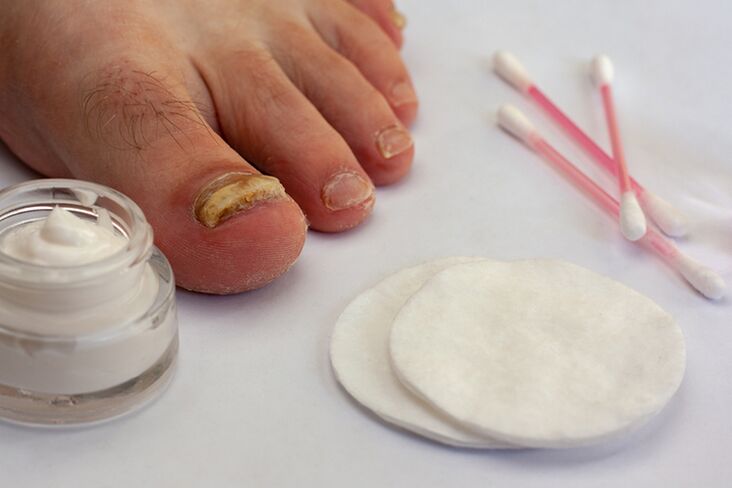
Why does Fungus Appear on the Feet?
Fungi are a type of infectious agent that affects the skin. These are complex and powerful microorganisms. Therefore, fungal diseases require a serious and comprehensive treatment approach.
Fungi have their favorite habitat on the skin. First of all, it is the skin of the toes and nails. The reason is understandable - the feet are usually in shoes, where a lot of moisture and dirt accumulates, and also very hot. Therefore, fungi that live on the feet have a lot of food and a good microclimate for reproduction. Some types of complex fungi are more likely to infect the skin, while other types of fungi, such as yeast and mold, prefer nail plates. Concomitant infections with some types of fungi may also occur.
Contributes to the development of fungus on the toes:
- reduction of local and general immunity;
- poor foot hygiene;
- uncomfortable and tight shoes;
- irregular exchange of socks or stockings;
- wearing socks or stockings made of synthetic and breathable materials;
- normal hypothermia or overheating of the feet;
- circulatory disorders in the legs;
- phlebeurysm;
- chronic diseases of the cardiovascular system, diabetes mellitus;
- long -term antibiotic treatment;
- increased foot sweat;
- lack of vitamins and minerals in the body;
- mechanical damage to the skin, calluses, foot injuries;
- overweight, excessive physical activity on the legs;
- irregular toenail trimming.
The most important of these factors are reduced immunity and poor circulation in the legs. Decreased immunity can occur for a variety of reasons. Usually this is a serious chronic disease, especially infectious. Also, immunity can be decreased due to HIV, taking immunosuppressants, and cancer. Equally important is the violation of blood circulation in the toes - caused by vascular diseases, blood, diabetes, smoking.
Foot mycoses can develop in both men and women. They appear more often in adults than in children.
Some types of fungi always inhabit the skin and are activated only in unfavorable conditions, for example, fungi of the genus Candida. And other species are spread from person to person. Infections can occur when visiting the gym, bathing, showering, if the person does not wear personal shoes. People who wear other people’s shoes or socks, or let others use them, are also at risk of getting an infection. Often, infections occur while using the same towels, manicure accessories, etc. Factors that increase the likelihood of infection are lesions on the surface of the skin, deformation of the nail plate.
Symptoms of toe mycosis
The main symptoms of foot mycosis are itching and burning. There may also be redness of the skin, small blisters, increased exfoliation and roughness of the skin, and an unpleasant odor. The first symptoms of skin mycosis can be confused with mild irritation, chafing.
Symptoms of onychomycosis
Fungus can affect not only the skin, but also the nails. The last type of mycosis is called onychomycosis. The main symptom of onychomycosis is a change in the structure and type of the nail, an increase in its fragility. The nail turns yellow, grooves and cracks appear on its surface, the nail plate thickens and changes shape. If left untreated, the nail will gradually flake off and crumble from the base of the nail.
What does the fungus on the fingers look like: photos
You cannot diagnose yourself based on pictures. Diagnosis must be made by a qualified dermatologist.
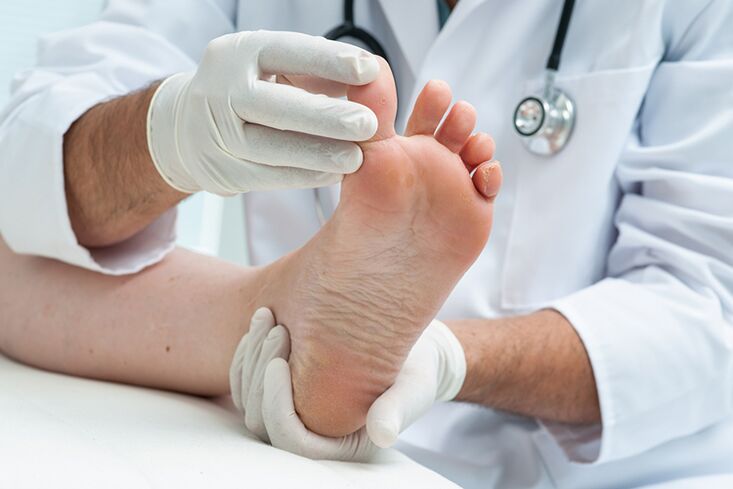
Only he will be able to determine the type of fungus. To do this, she may need not only an external foot examination, but also laboratory tests on the skin.
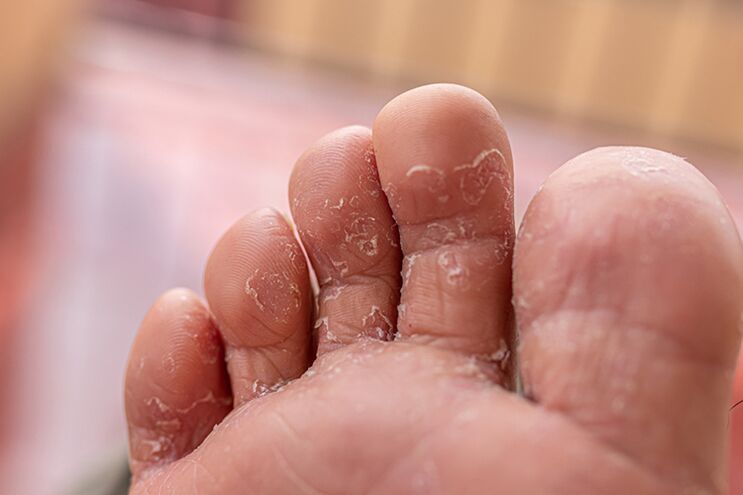
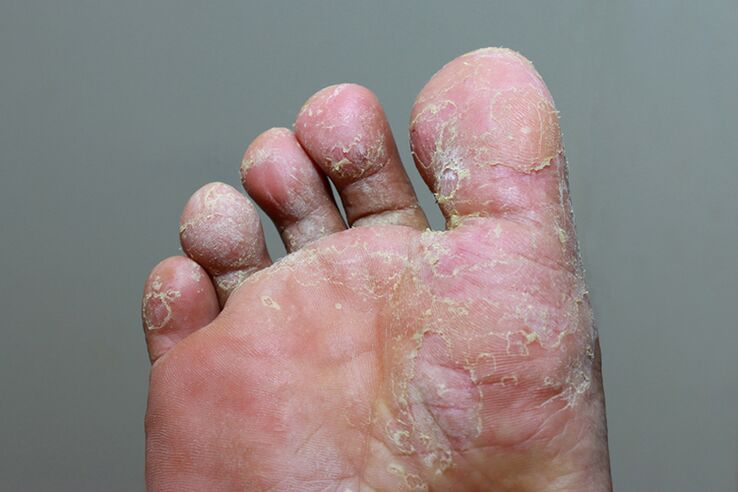
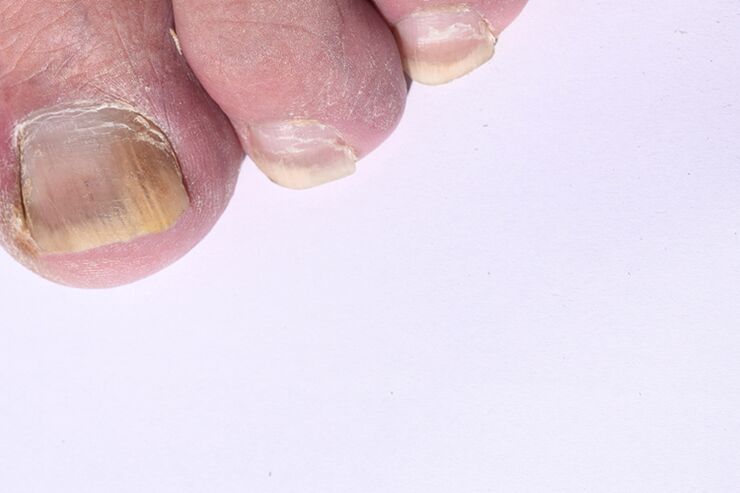
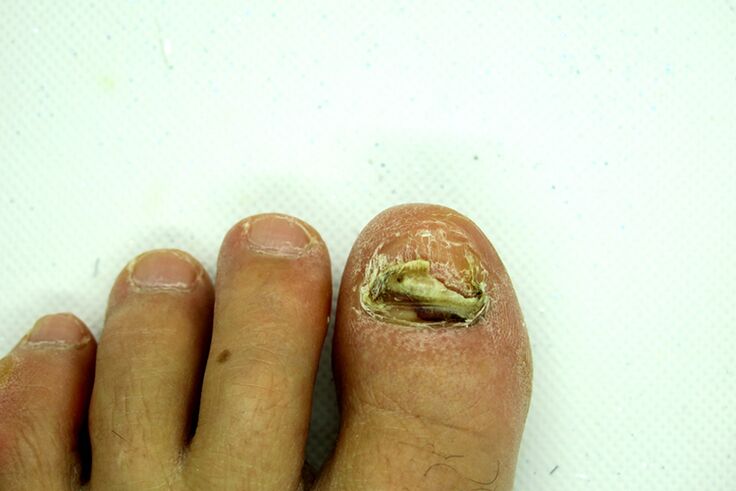
However, the presence of signs that even resembled the distance shown in the pictures became a concern and a visit to the doctor.
The treatment of this disease is complicated and is done at home under the supervision of a doctor.
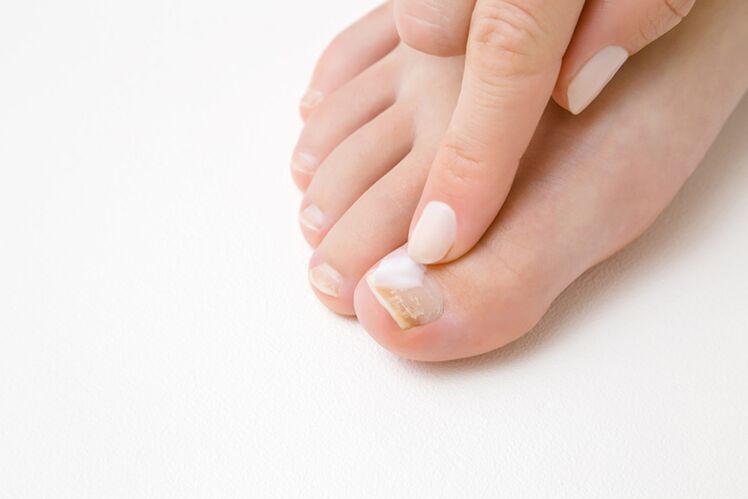
Fungus on the little finger
The fungus can affect the skin of any toe. But the little toes are the most easily infected. The little finger on tight shoes is often pressed, which causes abrasions and disrupted blood circulation. With the defeat of the little finger nail, the disease develops very quickly, faster than on other nails. If the little finger is infected, the infection can touch the other finger quickly.
Fungus on the little finger is treated in the same way as fungus on other parts of the skin. With onychomycosis on the little finger nail, the most rational solution is to remove the nail plate. This operation will not cause much inconvenience to the patient, as the nails on the little finger grow quickly. But, until the nail grows back (this may take 3-4 months), antifungal medication must be used to prevent re-infection.
How to treat toe fungus?
Treatment of mycosis should be started at the first alarming symptom. First of all, you need to contact a dermatologist to get a diagnosis. Before starting therapy, it is necessary to prove the fact of the presence of mycosis and the type of pathogenic microorganisms. For this purpose, the doctor will take a scratch from the skin or cut a piece of nail (if the nail is exposed). Blood tests, blood tests for sugar are being done. Mycoses on the skin of the feet must be distinguished from:
- other infectious skin diseases;
- allergic reactions;
- dermatosis caused by diabetes, vascular disease, stress and neurological diseases.
For the treatment of mycoses on the feet, local remedies (sprays, ointments, creams) are most often used. Only in severe cases the doctor can prescribe antimycotic pills. The most commonly used tablets are fluconazole, itraconazole, terbinafine.
Treatment is made based on the use of antimycotics. This type of preparation contains a substance that kills fungi (fungicidal) or stops their reproduction (fungistatic).
What antimycotics are most often used:
- clotrimazole,
- ketoconazole,
- terbinafine,
- nystatin,
- mikonazol,
- econazole,
- fluconazole.
Local preparations with antibacterial, anti-inflammatory and keratolytic properties are also used. Antibacterial agents are prescribed in case of suppuration, i. e. bacteria join the fungal infection. Anti-inflammatory medications work well with unpleasant symptoms such as itching and burning. However, they do not affect the cause of the disease - pathogenic microorganisms. Keratolytic agents include zinc, sulfuric and sulfur-salicylic ointments. They accelerate the regrowth of skin tissue by accelerating the exfoliation of dead epidermis.
For the treatment of foot mycoses, baths with antiseptic agents are also used - solutions of potassium permanganate, iodine, salt, baking soda, boric acid. Bathing should be done before bed for 20 minutes. To prevent infection with spores, healthy skin areas should be treated with chlorhexidine, iodine, hydrogen peroxide, and potassium permanganate. For the treatment of onychomycosis, varnishes with antimycotic substances are used - loceryl, exoderil, batrofen. This varnish must be applied on the nail plate.
Ointments and creams must be applied on previously washed and cleansed skin with the frequency specified in the product instructions. The area of application of the ointment must be slightly larger than the visible lesion area. To put the varnish on the nail plate, the nail should be steamed, the uneven edges should be sanded with a file, and the surface of the nail should be wiped with an alcohol -containing solution.
In folk medicine, decoctions of medicinal plants are used to get rid of mycosis on the feet - chamomile, calendula, sage, St. John's wort. John's wort, mint, vinegar solution, onion and lemon juice.
What to do if the fungus on the fingers does not disappear?
Treatment of mycosis is a long and difficult process. Fungal microorganisms are very strong, and it is impossible to get rid of them in a few days. Careful therapy for months is sometimes required. In this case, therapy should not be interrupted for a day. Treatment of onychomycosis cannot be completed until healthy and new nail plates have grown.
It is also important to consider other factors associated with the development of the disease. Failure to adhere to optimal skin hygiene and foot temperature conditions can invalidate all therapeutic efforts. This means that it is necessary to wash the skin surface of the feet periodically, to avoid overheating or hypothermia. It is also important to avoid mechanical damage to the skin, excessive pressure on the feet, cuts and injuries. Being overweight puts pressure on your legs, so if you are overweight you may want to consider losing weight.
If the patient always wears shoes infected with the fungus, then no strong medicine will help, because the new one will replace the dead microorganisms. Therefore, it is necessary to get rid of all the factors that contribute to re -infection. You can't walk with other people's shoes, socks. Socks must be washed thoroughly and replaced regularly. The inner surface of the shoe should be well sprayed with an anti-fungal agent.
With persistent mycosis, you need to analyze the state of health in general. Perhaps this will help identify the cause of immune and circulatory disorders in the legs. Therefore, it may be necessary to undergo a full examination and exclude problems with the heart, blood, blood vessels, organs of the endocrine system.
Finally, it is possible that microorganisms only develop resistance to the antimycotic agents used. Then it is necessary to change the medication. Systemic antimycotic pills may be needed. The dose of the drug should be chosen by a dermatologist.
























